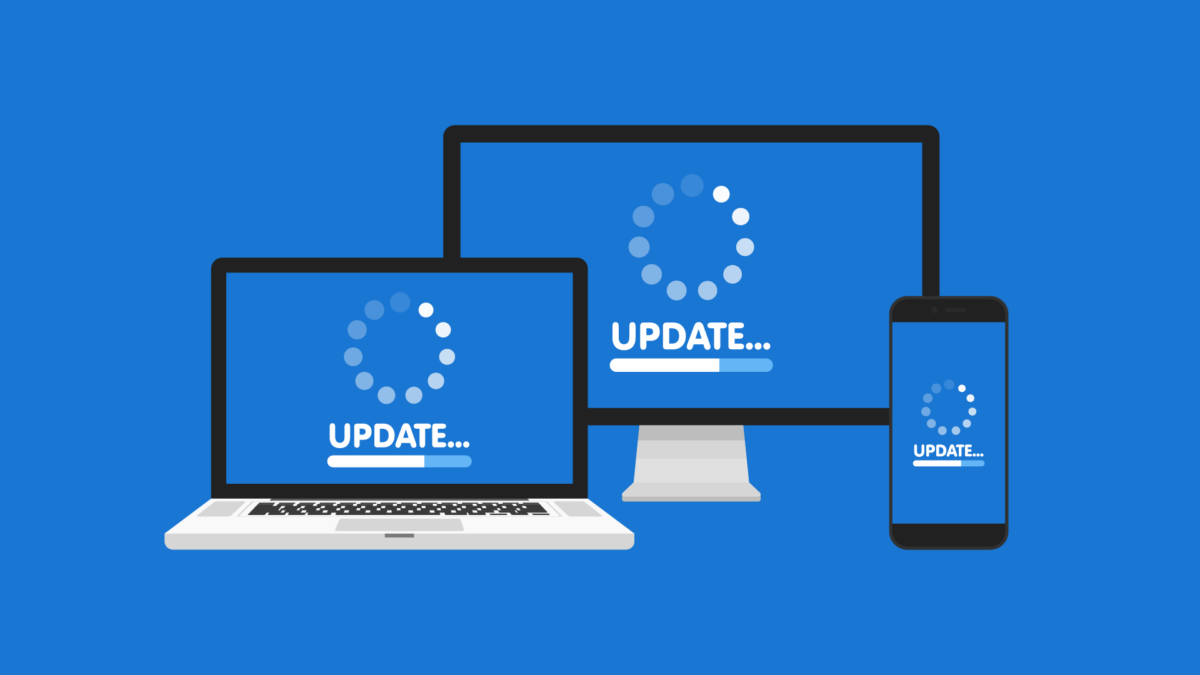
Gone are the days of perfunctory employee of the month awards and generic shout-outs in team meetings. Today’s employees seek recognition that’s meaningful, personalized, and aligned with their contributions and values.
When recognition is done right, it fosters a positive workplace culture of camaraderie, well-being, and productivity — effectively combatting challenges like employee stress and low engagement. In fact, a recent study found that among professionals who are highly satisfied, nearly three-quarters reported receiving recognition at least a few times per month.
In an era of increased burnout and disengagement, effective employee recognition is crucial to boost worker satisfaction. So, if your recognition program hasn’t adapted to the current challenges and needs of the workforce, it’s time to give it a refresh. Here are ten signs your recognition program is outdated:
Financial incentives have their place, but they aren’t sufficient to boost motivation and morale. Research from McKinsey has found that up to 55 percent of employee engagement is driven by nonfinancial recognition.
Herzberg’s Two-Factor Theory demonstrates the dual importance of both financial benefits and non-financial motivators to stave off employee stress and low engagement. According to this theory, there are two sets of factors related to job satisfaction: hygiene factors like financial compensation that prevent dissatisfaction, and non-financial motivators that increase satisfaction.
Providing both forms of recognition is the best way to enhance the impact of your recognition program — particularly with younger employees. So, be sure to offer meaningful motivators like verbal praise, professional growth opportunities, and health and wellbeing perks.
Manual and desktop-only recognition programs just don’t cut it in our hybrid work world. Mobile-based recognition software is necessary to ensure high levels of participation across all worker locations.
Not only do these platforms accommodate remote workers, but they also make recognition more fun, frequent, and accurate. As you look for a mobile-friendly employee recognition platform, make sure it has the following features:
This functionality lets managers and colleagues give recognition in real-time, which is the best way to make people feel seen and encourage desirable behavior.
By automating recognition for predictable milestones like work anniversaries, you can easily increase the frequency and consistency of recognition — both important factors in improving program effectiveness.
Social feeds and team channels help foster a sense of community where workers can celebrate accomplishments together.
Features like point systems, badges, and leaderboards promote friendly competition and generate excitement — which in turn boosts program participation and combats low engagement.


When recognition is limited to ceremonial plaques or annual bonuses given by leadership, it overlooks the everyday victories of workers and instead looks like mere lip service.
To make your recognition program more genuine and results-oriented, it’s necessary to prioritize peer-to-peer praise. This form of recognition plays a key role in cultivating a positive work environment and fostering productivity. Recent research found that companies with peer recognition systems in place experience significantly improved employee engagement and satisfaction as well as lower voluntary turnover rates.
As Cat Colella-Graham, internal comms lead and coach at Coaching for Communicators explains:
“People want to know that their work squad values them. They want to know if their manager values them, too…but the personal is what really needs to be fed at work, and we’re not feeding that enough. Those qualities of feeling seen, heard, and valued are often strongest among peers as opposed to leaders.”
Countless studies have demonstrated the measurable effects of recognition programs. Research from WorkProud has found that among workers who receive consistent recognition, 65% demonstrate high levels of pride in their work — which in turn correlates with higher engagement.
Recognition also has a big impact on employee stress levels, with research finding that appreciation from supervisors and coworkers plays a role in lowering burnout. This buffer against workplace stress is particularly crucial at a time of increased burnout across many industries.
If you’re experiencing poor or worsening rates of productivity, job satisfaction, or retention, your recognition program just isn’t doing what it’s supposed to — and it’s time to build a culture of meaningful recognition.
When employee recognition programs don’t align with organizational objectives, they come across as insincere and fail to achieve results. Like any employee engagement strategy, recognition efforts must be approached strategically. This means first honing in on your broader objectives and company values so that you can embed them within your recognition tactics.
In an article from Forbes, Chief People Officer at N-able, Kathleen Pai, explains how her organization prioritizes authentic recognition that’s in sync with their values:
“Anchoring around company values ensures employees are accountable for the “how” just as much as the “what,” improving employee interactions and encouraging better collaboration. During town halls, our leaders recognize those who have demonstrated extraordinary performance while living out our company values.”
Here are some ways you can align your goals and values with your recognition program:


One-size-fits-all recognition comes off as transactional and inauthentic. Employees crave individualized recognition and rewards that hone in on their unique strengths, work preferences, and career goals. As Jordan Peace, CEO of personalized benefits at Fringe, explains,
“Customizable rewards are meaningful because they meet real-life employee needs, and meaningful rewards make people happy. Employees want to feel supported and seen by their employers, and they’ll be evaluating their loyalty based on how they were treated and respected.”
Ready to swap out across-the-board bonuses or cookie-cutter awards ceremonies with personalized rewards? Here are some tips to get started:
Conduct surveys and meetings to get a feel for how your workforce prefers to be recognized. You may find that some employees prefer public praise while others prefer things like additional PTO days or fun swag.
When recognizing employees, avoid generic platitudes and instead make sure to highlight specific examples of how their unique skills or efforts benefited the company.
Let employees choose from a range of reward options, such as gift cards, professional development, or wellness perks. Employee recognition platforms like WorkProud let companies build out custom rewards catalogs to accommodate varied preferences.
If your recognition efforts are limited to work anniversaries or year-end reviews, you’re missing out on everyday opportunities to shape high performance. Giving immediate feedback not only helps employees feel appreciated on a regular basis, but it does a better job of encouraging desirable behavior.
Based on research findings, Gallup recommends giving prompt employee feedback every seven days “to ensure that the employee knows the significance of the recent achievement and to reinforce company values.”
However, keep in mind that preferences may vary by company, so it’s a good idea to gather employee feedback to determine the best frequency of recognition.


To drive strong business outcomes, it’s essential to regularly assess recognition efforts and monitor key performance indicators (KPIs) based on your overarching objectives. By keeping tabs on data analytics and employee feedback, you’ll be able to make adjustments as necessary to improve results.
Modern employee recognition platforms like WorkProud feature built-in data tracking tools, so you can easily monitor important metrics like:
With levels of employee stress at all-time highs and increased burnout plaguing companies in every industry, well-being perks are a must-have for your recognition program.
Recognition programs that ignore wellness benefits risk appearing outdated and fail to address a crucial aspect of employee satisfaction. A recent survey from the American Psychological Association found that an astounding 87% of employees think that management-led wellness actions like offering flexible hours and encouraging breaks as needed would help their mental health.
Consider including the following wellness benefits in your recognition and rewards offerings:
Recognition isn’t just about current job performance — it’s about shaping future career growth and job satisfaction. Today’s workforce is increasingly interested in receiving skill development and training opportunities, with research suggesting that “individual growth, learning, and development programs are effective ways to combat burnout and to retain and engage employees.”
Investing in professional development perks is a high-ROI tactic that you and your workers will benefit from. Some wellness perks to consider offering include:
Adapting your recognition program to the current professional landscape can seem daunting — but fortunately, using an end-to-end rewards and recognition platform will make it that much easier. WorkProud’s mobile-friendly solution offers everything from peer-to-peer recognition, gamified recognition features, and customizable rewards catalogs — all while providing the data analytics you need to measure success. By combining a full suite of personalized incentives, social interaction features, and data tracking tools, WorkProud helps organizations struggling with low engagement and increased burnout. Contact us today to learn more!
WorkProud is committed to helping its clients create a unified approach to the employee experience by helping them build cultures of workplace pride. Trusted by millions of users at some of the world’s most recognized employer brands, WorkProud delivers a comprehensive approach to building company cultures that inspire people to be Proud of their Work and Proud of their Company.
A
Afghanistan
Albania
Algeria
Andorra
Angola
Antigua & Deps
Argentina
Armenia
Australia
Austria
Azerbaijan
B
Bahamas
Bahrain
Bangladesh
Barbados
Belarus
Belgium
Belize
Benin
Bhutan
Bolivia
Bosnia Herzegovina
Botswana
Brazil
Brunei
Bulgaria
Burkina
Burundi
C
Cambodia
Cameroon
Canada
Cape Verde
Central African Rep
Chad
Chile
China
Colombia
Comoros
Congo
Congo {Democratic Rep}
Costa Rica
Croatia
Cuba
Cyprus
Czech Republic
Denmark
D
Djibouti
Dominica
Dominican Republic
E
East Timor
Ecuador
Egypt
El Salvador
Equatorial Guinea
Eritrea
Estonia
Ethiopia
F
Fiji
Finland
France
G
Gabon
Gambia
Georgia
Germany
Ghana
Greece
Grenada
Guatemala
Guinea
Guinea-Bissau
Guyana
H
Haiti
Honduras
Hungary
I
Iceland
India
Indonesia
Iran
Iraq
Ireland {Republic}
Israel
Italy
Ivory Coast
J
Jamaica
Japan
Jordan
K
Kazakhstan
Kenya
Kiribati
Korea North
Korea South
Kosovo
Kuwait
Kyrgyzstan
L
Laos
Latvia
Lebanon
Lesotho
Liberia
Libya
Liechtenstein
Lithuania
Luxembourg
M
Macedonia
Madagascar
Malawi
Malaysia
Maldives
Mali
Malta
Marshall Islands
Mauritania
Mauritius
Mexico
Micronesia
Moldova
Monaco
Mongolia
Montenegro
Morocco
Mozambique
Myanmar
M
Namibia
Nauru
Nepal
Netherlands
New Zealand
Nicaragua
Niger
Nigeria
Norway
O
Oman
P
Pakistan
Palau
Panama
Papua New Guinea
Paraguay
Peru
Philippines
Poland
Portugal
Q
Qatar
R
Romania
Russian Federation
Rwanda
S
St Kitts & Nevis
St Lucia
Saint Vincent & the Grenadines
Samoa
San Marino
Sao Tome & Principe
Saudi Arabia
Senegal
Serbia
Seychelles
Sierra Leone
Singapore
Slovakia
Slovenia
Solomon Islands
Somalia
South Africa
South Sudan
Spain
Sri Lanka
Sudan
Suriname
Swaziland
Sweden
Switzerland
Syria
T
Taiwan
Tajikistan
Tanzania
Thailand
Togo
Tonga
Trinidad & Tobago
Tunisia
Turkey
Turkmenistan
Tuvalu
U
Uganda
Ukraine
United Arab Emirates
United Kingdom
Uruguay
Uzbekistan
V
Vanuatu
Vatican City
Venezuela
Vietnam
Y
Yemen
Z
Zambia
Zimbabwe
Here you will find insights curated for leadership seeking in-depth industry knowledge. Explore comprehensive studies, helpful guides, and expert white papers.
*By selecting “VIEW RESOURCES,” you agree to WorkProud’s Privacy Policy. You may unsubscribe from our emails at any time. Please note when unsubscribing: it may take up to 10 business days for your request to take effect.